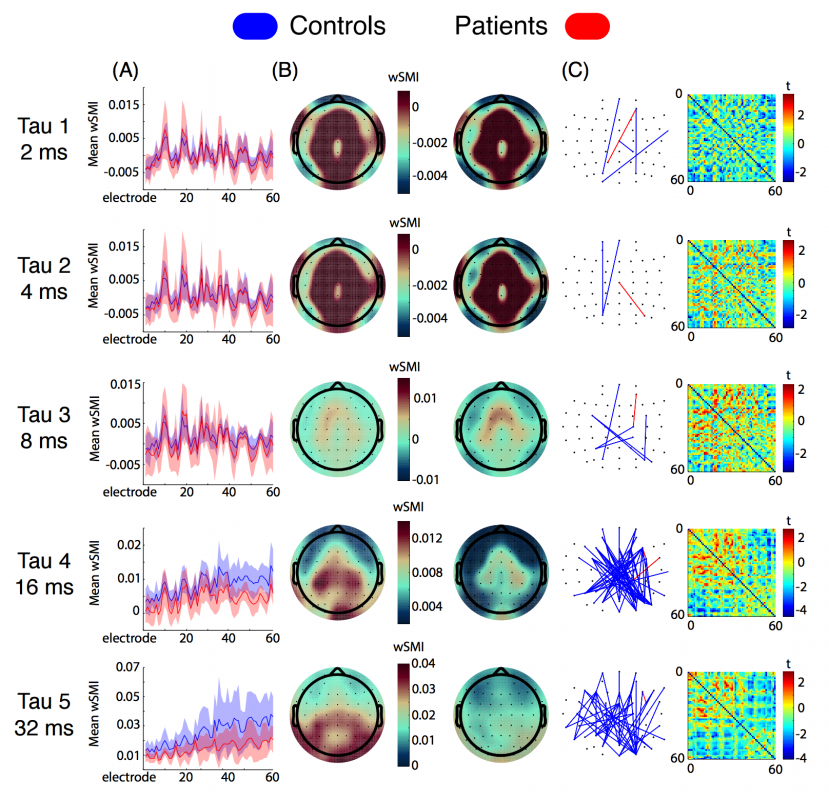Alzheimer’s disease (AD) as a disconnection syndrome disrupts both brain information sharing and memory binding functions. The extent to which these two phenotypic expressions are shared pathophysiological mechanisms remains unknown.
OBJECTIVE: To unveil the electrophysiological correlates of integrative memory impairments in AD towards new memory biomarkers for its prodromal stages.
METHODS: Patients with 100% risk of familial AD (FAD) and healthy controls underwent assessment with the VSTM binding test (VSTMBT) while we recorded their EEG. We applied a novel brain connectivity method (Weighted Symbolic Mutual Information) to EEG data.
RESULTS: Patients showed significant deficits during the VSTMBT. A reduction of brain connectivity was observed during resting as well as during correct VSTM binding, particularly over frontal and posterior regions. An increase of connectivity was found during VSTM binding performance over central regions. While decreased connectivity was found in cases in more advanced stages of FAD, increased brain connectivity appeared in cases in earlier stages. Such altered patterns of task-related connectivity were found in 89% of the assessed patients.
CONCLUSIONS: VSTM binding in the prodromal stages of FAD are associated to altered patterns of brain connectivity thus confirming the link between integrative memory deficits and impaired brain information sharing in prodromal FAD. While significant loss of brain connectivity seems to be a feature of the advanced stages of FAD increased brain connectivity characterizes its earlier stages. These findings are discussed in the light of recent proposals about the earliest pathophysiological mechanisms of AD and their clinical expression.


